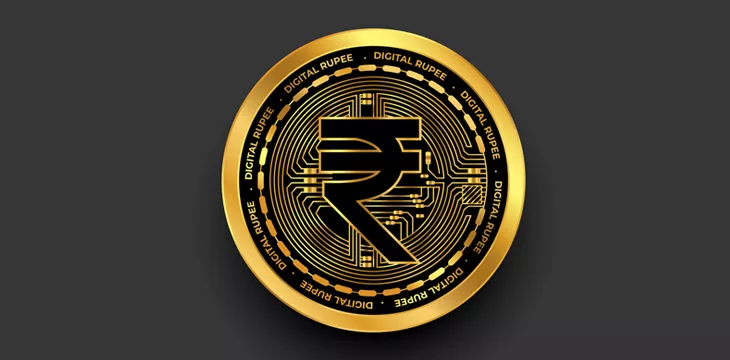
|
Getting your Trinity Audio player ready... |
The Reserve Bank of India (RBI) has set no specific timeline for the ‘full-fledged’ launch of its central bank digital currency (CBDC) or the e-rupee, central bank Governor Shaktikanta Das said in an exclusive interview with media outlet ET Now.
“We are in no great hurry to launch the digital currency because we want to be absolutely sure about the safety, robustness, and the integrity of the digital currency,” Das said.
“We have no timeline or target date. It all depends on when we feel we are ready to launch it,” he added.
A CBDC is a digital form of currency notes issued by the country’s central bank. As many as 130 countries, representing 98% of the global gross domestic product (GDP), are exploring
a CBDC.
The RBI started its first digital rupee pilot in the wholesale segment on November 1, 2022, while the retail digital rupee pilot began on December 1, 2022.
Interestingly, the size of the pilot project “is now very high,” Das said. India currently has about 4.3 million retail users of CBDC. An additional 400,000 merchants are also using the e-rupee.
“So roughly 47 lakh [4.7 million] merchants and [retail] users are part of the pilot project,” Das said, adding that new challenges and issues keep cropping up about the e-rupee’s technology, as well as questions around the safety features and speed of transactions.
“When we are absolutely confident, that perhaps will be the right time to launch it in a full-fledged manner,” Das said.
Last month, the RBI said it is looking to enable additional functionalities of programmability and offline capability in CBDC retail payments. The CBDC retail pilot currently enables person-to-person and person-to-merchant transactions.
While programmability is expected to facilitate transactions for specific and targeted purposes, offline functionality will enable transactions in areas with poor or limited internet connectivity.
The central bank has also started discussions with the Hong Kong Monetary Authority (HKMA), the U.S. Federal Reserve, and the international payment platform SWIFT to explore cross-border payments for CBDCs. The RBI is also looking to introduce the digital rupee in the call money market and plans to use CBDCs as tokens for call money settlement.
More awareness on crypto risks today
“I think the exuberance [for cryptocurrencies] which was there two years ago, that exuberance is not there [anymore]. There is greater awareness among people about the risks and dangers associated with crypto,” Das said during the interview.
“Some people will make money, but a larger number of people are likely to incur loss because it’s a speculative product,” Das added.
Earlier, the RBI insisted on a complete ban on digital currencies, but the government, instead of an outright restriction, imposed one of the harshest taxation on digital asset trading—a 30% flat tax on all digital currency income with no provision to offset losses and a 1% tax deducted at source (TDS) on all transactions above INR 10,000 ($120).
A study from Esya Centre, an Indian policy think tank, claimed that due to the imposition of harsh tax measures in February 2022, as much as $3.85 billion had moved to overseas digital asset trading exchanges as traders sought to evade domestic levies.
“At the moment, some of these products [digital currencies] are being traded at very high prices, and so there could be some amount of interest, which is perhaps more than what it was one year ago. But if you compare with where we were two years ago—when there was a kind of exuberance building up—I think today there is a greater amount of realism,” Das said.
BTC, the largest digital currency in the world with a market capitalization of $1.3 trillion, is currently trading at over $66,000 and has gained over 12% in the last seven days, data from CoinMarketCap shows. Prices of Ethereum, the second-largest digital currency, have risen over 17% to $3,876 in the past seven days.
‘Nothing against blockchain technology’
The RBI’s governor said the central bank has nothing against blockchain, the underlying technology of digital currencies.
“We are ourselves, using the blockchain technology with regard to our central bank digital currency. So the underlying technology is a different thing altogether that has to grow,” Das said.
A similar sentiment was expressed by Finance Minister Nirmala Sitharaman.
“Use of blockchain technology is going to rise by about 46% in the next few years,” Sitharaman had said.
Several provincial governments are also utilizing blockchain technology for various use cases. The western Indian state of Maharashtra is using blockchain technology to store data of e-registration for newly constructed properties. The Maharashtra government has also started using blockchain technology to validate caste certificates to prevent fraud.
In the northern Indian state of Uttar Pradesh, a police unit in Firozabad city launched an online complaint portal, policecomplaintonblockchain.in, that uses blockchain technology’s immutability to protect complaints from being tampered with.
To learn more about central bank digital currencies and some of the design decisions that need to be considered when creating and launching it, read nChain’s CBDC playbook.
Watch: ‘Disruptive’ blockchain can be useful for India
Recommended for you
Lorem ipsum odor amet, consectetuer adipiscing elit. Elit torquent maximus natoque viverra cursus maximus felis. Auctor commodo aliquet himenaeos fermentum
Lorem ipsum odor amet, consectetuer adipiscing elit. Accumsan mi at at semper libero pretium justo. Dictum parturient conubia turpis interdum

 11-22-2024
11-22-2024


